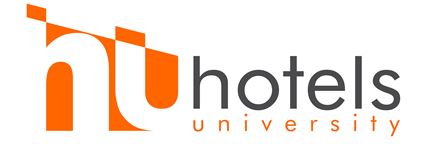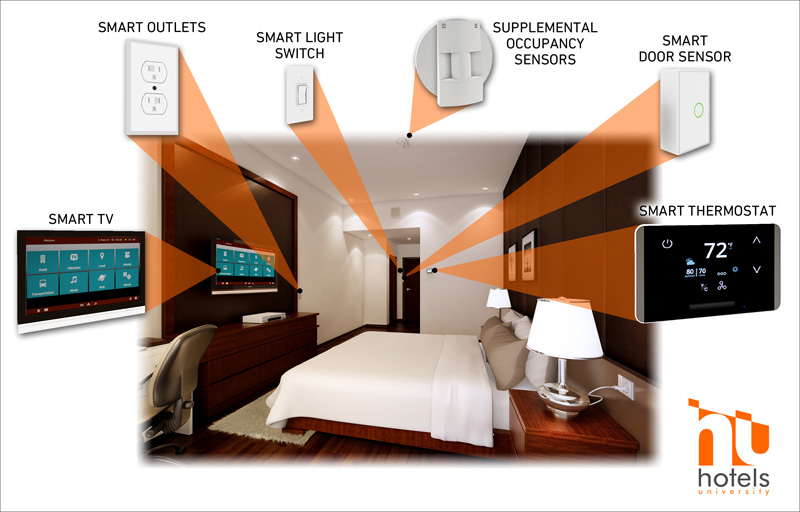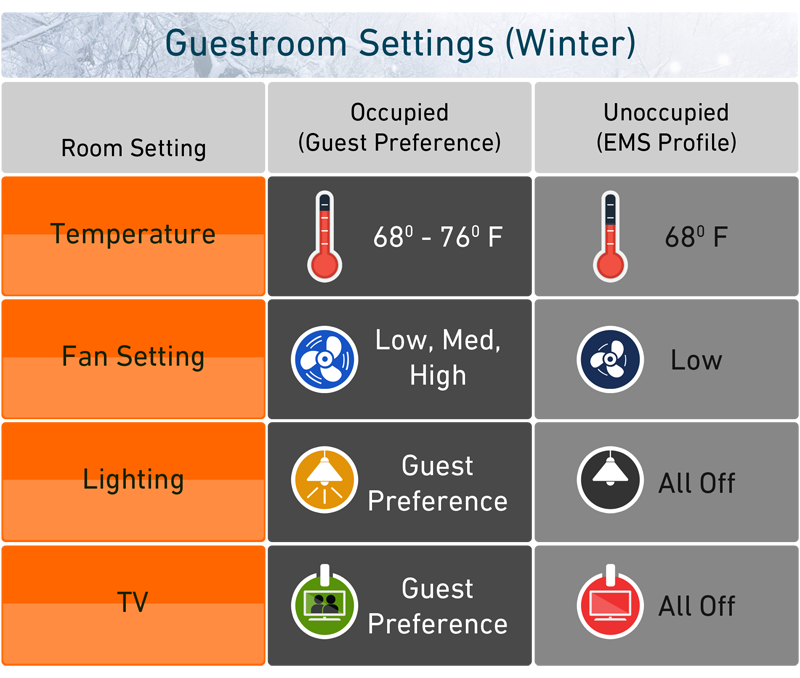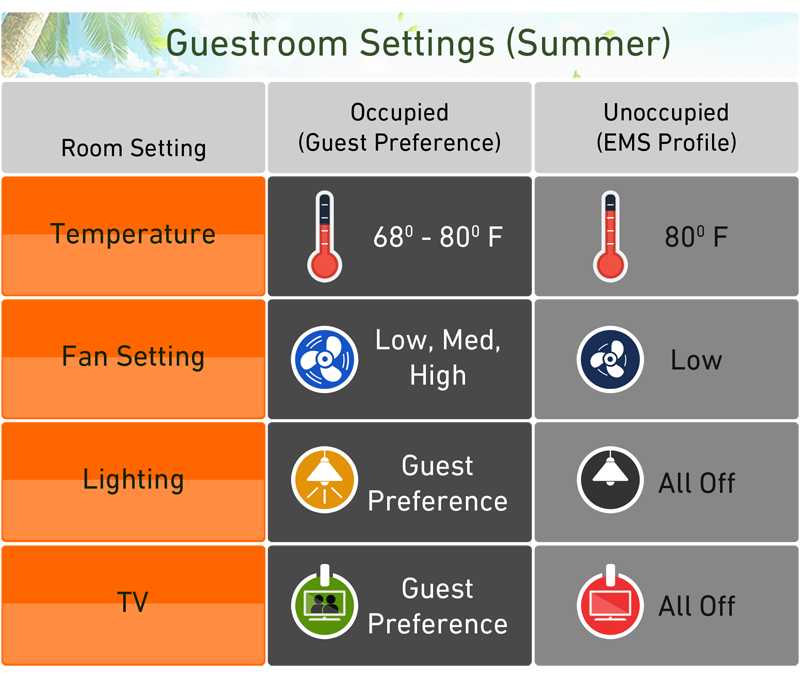Hotel Energy Management Systems Part2:
Conserve Energy Without Sacrificing Comfort!
In my last newsletter, I discussed Energy Management Systems (EMS) as an option to reduce energy waste in your hotel. One of the most common concerns about an EMS is that they shut off while hotel guests are sleeping due to lack of motion in the guestroom. After all, no hotel owner wants guests’ complaints in the middle of the night about their AC unit not working due to a faulty occupancy sensor reading. While this was a concern with earlier occupancy sensors, sensor technology has become infinitely more accurate in the past few years. A good sensor setup with supplemental sensors can result in a very accurate room reading.
Below are the six major in-room components that can make up a typical EMS.
- Smart Thermostats – These wireless thermostats typically have internal occupancy sensors built-in. Some of them can have PIR (Passive Infrared) ability that detects infrared radiation of the guests and identifies occupied rooms by comparing it to unoccupied ones. Then, it can adjust guestroom temperature and fan settings accordingly. Also, networked thermostats can track HVAC run-times and system usage.
- Supplemental Occupancy Sensors – These sensors are an effective solution when guestroom geometry does not allow thermostat sensors to cover all areas effectively. These sensors are mounted on the guestroom wall or ceiling. Some of the sensors with PIR feature detect the presence of a sleeping guest. This helps EMS to work the HVAC system properly during the night.
- Smart Outlets – Smart outlets can monitor power consumption and control any electric device in guestrooms. Outlets can stop or engage the flow of power to one or both outlet plugs. This allows guestroom lighting, appliances, and televisions in vacant rooms to be turned off automatically.
- Smart Light Switches – Similar to smart outlets, smart switches operate just like a standard light switch, yet have the ability to stop power flow to lights. They are controlled by commands from a smart thermostat, occupancy sensor, or hotel (Property Management Systems) PMS.
- Smart Door & Window Sensors – Smart sensors serve as supplemental occupancy detectors that wirelessly recognize the opening and closing of entry doors, balcony doors, and windows. This data is then sent to the thermostat for necessary adjustments (e.g., shutting off the HVAC system when the balcony door opens).
- Smart TV – With Smart TVs, hotel guests can stream music, watch movies, connect to social media, and even make dinner reservations. When connected to a hotel PMS, front desk staff can display a welcome screen that activates upon guest check-in.
Guest Profiles
Occupancy detection and scheduling are the key mechanisms for controlling guestroom environment. Please see below for an example of EMS guestroom profile per occupied/unoccupied rooms in both warm and cold climates:
In our final newsletter on guestroom EMS, we will explore the typical upfront costs and ROIs generated by these systems. In the meantime, please do not hesitate to contact me by email or phone.
Thank you,







Recent Comments